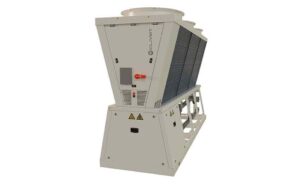ASHRAE seeks data centre comments
23rd February 2015 USA: A proposed standard from ASHRAE providing requirements for energy use in data centres is open for public input.
USA: A proposed standard from ASHRAE providing requirements for energy use in data centres is open for public input.
ASHRAE Standard 90.4P, Energy Standard for Data Centers and Telecommunications Buildings, is open for its first public review until March 30. The standard would establish the minimum energy efficiency requirements of data centres and telecommunications buildings for design and construction and for creation of a plan for operation and maintenance, and for utilisation of on-site or off-site renewable energy resources.
“The proposed standard is intended to work in concert with ASHRAE/IES Standard 90.1, Energy Standard for Buildings Except Low-Rise Residential Buildings,” Ron Jarnagin, chair of the Standard 90.4 committee said. “There is no intent to duplicate what is contained in Standard 90.1, but rather we are proposing criteria to support the specialised nature of the larger data centres. When adopted, design and construction of data centres will require the use of both Standards 90.1 and 90.4 for compliance with building codes.”
David Quirk, chair of ASHRAE’s Technical Committee 9.9, Mission Critical Facilities, Technology Spaces and Electronic Equipment, noted that the intent of Standard 90.4P is to create a performance based approach that would be more flexible and accommodating of innovative change, which can occur rapidly in data centre design, construction and operation.
Data centre applications are unlike their commercial building counterparts in two significant ways, he noted. First, they include significantly higher plug loads. And second, they employ rapidly changing technology for the IT equipment and associated power/cooling approaches.
“It has been acknowledged that these differences drive a fundamentally different approach to regulating minimum efficiency requirements for the electrical and mechanical systems that support the plug loads,” Quirk said. “By using an approach that requires compliance to a ‘system’ level of performance, designers and end-users can utilise various trade-offs in their optimisation strategies depending on their company specific business models.”
There was also a recognition that current industry modelling tools do not possess all the necessary mathematical models to accurately and appropriately model data center HVAC and power design. As a result, demonstrating compliance to the 90.1 Chapter 11 or energy cost budget (ECB) approaches was deemed impractical, according to Jarnagin.
This standard is based on the principles of power use effectiveness (PUE), as defined by The Green Grid. However, because PUE is an operational measurement metric, and this is a design standard, PUE terminology is not a technically accurate usage. The committee recognizes that language needs to be developed to relate the calculations of energy efficiency set forth in this standard to a total efficiency number, as well as to allow tradeoffs between electrical and mechanical elements. Suggestions from reviewers as to how best to accomplish this are welcome, he said.
The proposed standard applies to new data centers and telecommunications buildings or portions thereof and their systems, new additions to data centers and telecommunications buildings or portions thereof and their systems, and modifications to systems and equipment in existing data centers and telecommunications buildings or portions thereof.
The draft standard can be found here.
Related stories:
Comments sought on data centre standard – November 26, 2013
USA: A proposed standard from ASHRAE that specifically addresses the unique energy requirements of data centres is open for advisory public review. Read more…







